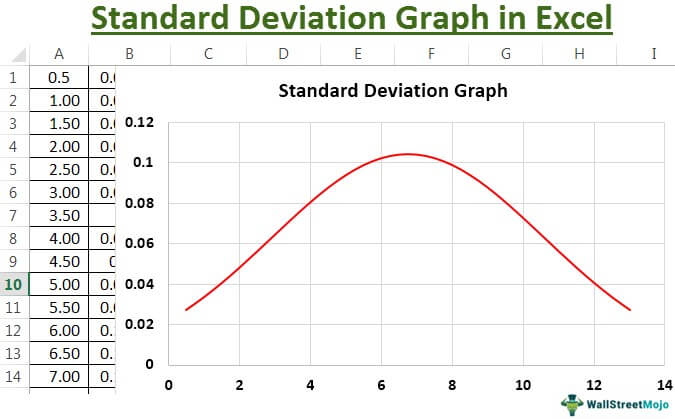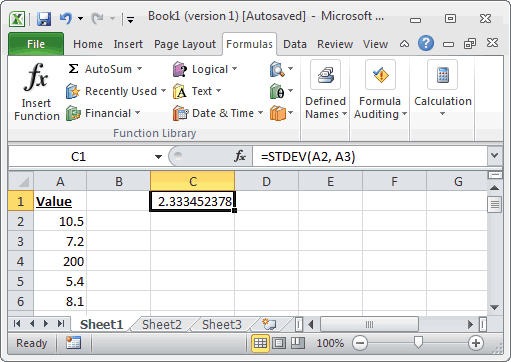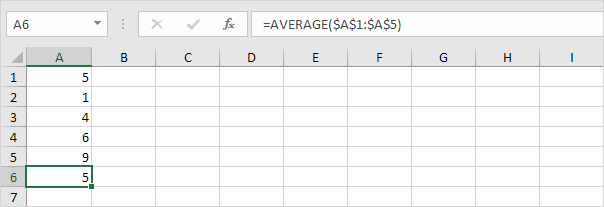

The lower the standard deviation, the closer the data points to the mean. The standard deviation shows the variability of the data values from the mean (average). STDEV calculates the standard deviation of the sample data supplied as an argument. The height is measured from the shoulder level and is denoted in millimeters. 
The following table shows the heights of different goats. Let us consider an example to understand the working of the STDEV.S function. #2– Calculate Sample Standard Deviation in Excel This indicates that the employee scores range from 53.37 to 57.03. It is the square root of the variance.Ĭonclusion: The standard deviation is 1.83. The results are summed as shown in the following image. It is the difference of each score from the mean.
Calculate the population variance Population Variance Population variance can be calculated using this formula: σ2 = ∑ni=1 (xi – μ)2 / N, where, σ2 is population variance, x1, x2, x3,….xn are the observations, N is the number of observations and µ is the mean of the data set. The output 55.2 signifies the average employee score. The average formula is =AVERAGE( read more of the data. This formula is categorized as a Statistical Function. Calculate the mean (average) Mean (average) The AVERAGE function in Excel gives the arithmetic mean of the supplied set of numeric values. The steps to calculate standard deviation in Excel are listed as follows: We want to calculate the standard deviation of the given data set. They indicate the skill levels of the employees. The following are the employee scores of an organization. Let us consider an example to understand the concept of standard deviation in Excel. Calculating Standard Deviation in Excel #1 – Calculate Population Standard Deviation in Excel Note: The STDEV.S is available in Excel 2010 and the subsequent versions. The logical value “false” is counted as 0 and “true” is counted as 1. The STDEVA function calculates the standard deviation by counting the text values as zero. The “S” of the function represents the sample data set. The STDEV.S function calculates the standard deviation Standard Deviation Standard deviation (SD) is a popular statistical tool represented by the Greek letter 'σ' to measure the variation or dispersion of a set of data values relative to its mean (average), thus interpreting the data's reliability. The two functions are explained as follows: Note: The sample standard deviation helps make conclusions for the population. A sample of the population is taken when it is difficult to use the complete data set. The population refers to the whole data set. The population and sample are defined as follows: 
Otherwise, it returns the “#DIV/0!” error. Note 2: The sample standard deviation formula works correctly when the supplied arguments contain at least two numeric values. Note 1: If the entire sample data is entered as a range, the “number 2” argument becomes optional. “Number 1” is mandatory and “number 2” is an optional argument.
Number 2: This is the second value of the sample data. Number 1: This is the first value of the sample data. The function accepts the following arguments: The syntax of the function is stated as follows: The functions STDEV.S, STDEVA, STDEV, DSTDEV are under sample and STDEV.P, STDEVP, STDEVPA, DSTDEVP are under population. These are grouped under sample and population. In excel, there are eight formulas to calculate the standard deviation. Source: Standard Deviation in Excel () Standard Deviation Formulas in Excel #EXCEL STANDARD DEVIATION HOW TO#
You are free to use this image on your website, templates etc, Please provide us with an attribution link How to Provide Attribution? Article Link to be Hyperlinked However, STDEV.P and STDEV.S are only available in Excel 2010 and subsequent versions. STDEV is available in Excel 2007 and the previous versions.

In Excel, the STDEV and STDEV.S calculate sample standard deviation while STDEVP and STDEV.P calculate population standard deviation. The standard deviation shows the variability of the data values from the mean (average).








 0 kommentar(er)
0 kommentar(er)
